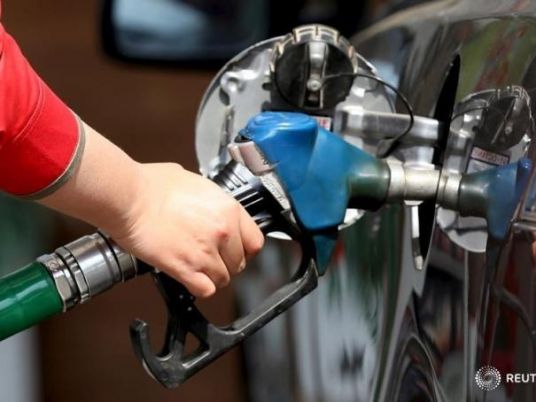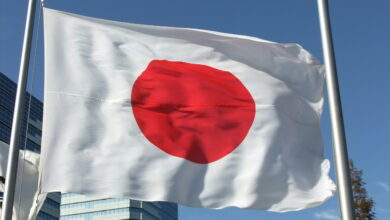For years, Egypt’s government has discussed the need to reform fuel subsidies that mainly benefit energy-intensive industries and the wealthy, who consume more fuel than the poor. But all the talk has resulted in little action.
Fuel subsidies are estimated at LE95.5 billion, which equated to 71 percent of total subsidies and 19 percent of total expenditures in the fiscal year 2011/12 budget, according to the Egyptian Center for Economic Studies (ECES).
Economists and social justice activists argue that fuel subsidies need urgent reform, especially with an expanding budget deficit, but the potential timing of such reforms is unclear.
The cabinet passed a decree in late November 2011 to eliminate natural gas subsidies that go to energy-intensive industries by January, but it has yet to be implemented. Companies claim ignorance of the decree and attendant price increases, according to Tamer Abou Bakr, president of Genco Group, a private natural gas distribution company.
Magda Kandil, ECES executive director, estimates that implementation of the decree would effectively remove LE4 billion of subsidies to these industries.
She admits this is a small change for companies ─ such as cement, steel and fertilizer factories ─ that reap huge profits anyway, but argues the decree is a step in the right direction, if the government follows through.
Anecdotal evidence suggests that no one in power is keen to take action on fuel subsidy reform during the transition phase, and that any decision will be implemented when the newly elected Parliament drafts the next budget.
According to ECES figures, natural gas is among the least contentious of the fuel subsidies, as it only constitutes a small portion of the total bill. Along with fuel oil, natural gas accounts for 24 percent of fuel subsidies.
Oil and its by-products make up the largest portion, and have yet to be addressed. Diesel oil accounts for 48 percent, which is used for the transportation sector including used by energy intensive industries to transport goods and services.
Liquefied petroleum gas (Butane), used in cooking appliances and vehicles, makes up 14 percent of fuel subsidies, and gasoline, used in cars, takes up the remaining 13 percent.
Concern about how price increases would affect the 40 to 50 percent of the population considered poor, as well as intense lobbying by energy-intensive industries, many of whom were connected to the Mubarak regime, have prevented or stalled subsidy reform efforts over the years.
“There have been different reasons at different times for a lack of action on fuel subsidies,” former Finance Minister Samir Radwan told Egypt Independent, noting that at different points the transportation sector, bakeries, and poor communities have all raised concerns about reforming subsidies.
“From 2005, the government was pro-business and energy-intensive industries were provided with subsidized fuel, because they were supporters of the government,” Radwan said.
“Now, it is the political situation. The collective psyche of Egyptians is that by taking away subsidies it will hit the poor very hard. But, you can compensate the poor and remove subsidies. Brazil, for example, has been very successful in its cash transfers program.”
The World Bank, along with the Ministry of Economic Development, has drawn a poverty map of Egypt in order to identify areas in need, Radwan said.
Kandil said countries such as Indonesia and Jordan have already taken “brave” steps in lifting subsidies, and provide models that Egypt can follow.
Between 2005 and 2008, Indonesia increased prices while introducing a large temporary cash transfer program covering one third of households. The move built on existing social safety net programs. It then reallocated some budgetary savings to existing education, health and infrastructure programs.
There is a danger that cash transfers might be used for unintended purposes. However, this danger could be averted if transfers are linked to specific conditions, such as committing to an education program, Kandil said.
These issues will, however, be left to Parliament to debate and decide.
With more than 40 percent of seats, the Muslim Brotherhood’s Freedom and Justice Party will heavily influence policy. According to its economic platform, the party wants to cancel “subsidies for energy-intensive industries” and review “the current subsidy policy of petroleum products, which gives the rich 80 percent of subsidy funds.”
In second place, with 24.3 percent of seats in the lower house, the Salafi-oriented Nour Party will have its say, though it remains unclear how much it will influence FJP thinking on this issue.
Tarek Shaalan, a member of Nour’s economic committee, said he opposes lifting subsidies immediately, but instead wants to focus on reducing consumption.
“I want to implement incentives for people to use energy more efficiently. With electricity bills, for example, there is a minimum charge, which leads to over-consumption,” Shaalan told Egypt Independent. “We could set a target for household consumption; if it’s met, then the bill would be subsidized, if not, then the extra consumption would be charged at normal prices.”
He also said a study is needed to determine which products are cheaper for Egypt to import and which are cheaper to manufacture locally, given their associated energy costs.
“Then, I will make a decision about which industries to remove subsidies for,” he said.
While reducing energy consumption would be a welcome move, there also needs to be a distinction made between subsidizing costs for rich and poor households, especially given that subsidies are such a burden on government finances.
And with industry, subsidies are going to profit-making, private, multinational companies, many of which constitute monopolies. They are also labor-intensive and do not create many jobs, as pointed out by a number of studies including a recently published report on fuel subsidies by the Egyptian Initiative for Personal Rights.
As Abou Bakr said, “Twenty percent of fuel subsidies benefit 80 percent of the poor, while the remaining 80 percent of subsidies benefit the rich.”




